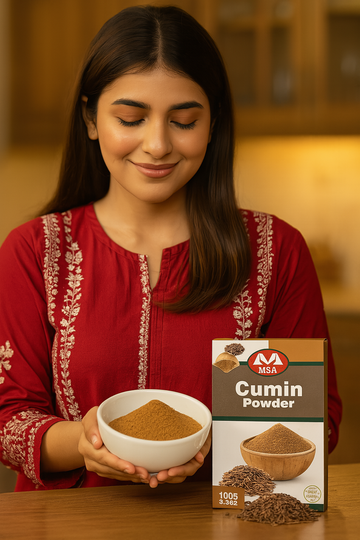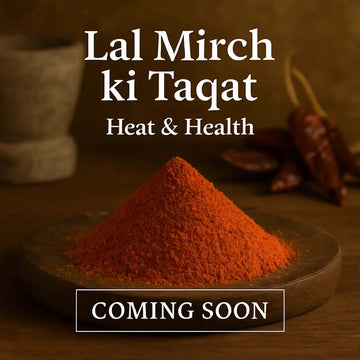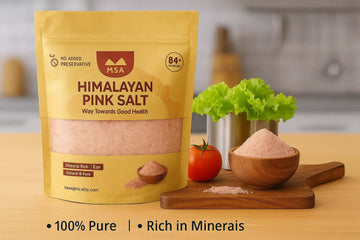Himalayan Salt vs. Regular Salt: Which One Should You Choose?

Discover the differences, health benefits, and uses of Himalayan salt compared to regular table salt.
Introduction
Salt is an essential ingredient in cooking and an important mineral for our bodies. However, not all salts are created equal. In recent years, Himalayan salt has become a popular alternative to regular table salt due to its vibrant pink hue and claims of added health benefits. But is Himalayan salt really better for you? And how does it compare to the everyday salt you use in your kitchen?
In this article, we’ll explore:
✅ The key differences between Himalayan salt and regular salt
✅ Health benefits and potential drawbacks of each
✅ Best uses in cooking and wellness
✅ SEO-optimized keywords for better Google search visibility
🌄 What is Himalayan Salt?
Himalayan salt is a natural rock salt mined from the Khewra Salt Mine in Pakistan, believed to be over 250 million years old. Its distinctive pink color comes from trace minerals such as iron, magnesium, and potassium. Unlike regular table salt, Himalayan salt is typically less processed, retaining more of its natural minerals.
🧂 What is Regular Table Salt?
Regular salt, also known as table salt, is primarily sourced from sea water or underground salt deposits. It undergoes heavy processing to eliminate minerals and impurities, leaving behind pure sodium chloride. Most table salts are iodized to prevent iodine deficiency, a common health concern in some regions.
🧪 Himalayan Salt vs. Regular Salt: Nutritional Comparison
| Nutrient | Himalayan Salt (per gram) | Regular Table Salt (per gram) |
|---|---|---|
| Sodium | 368 mg | 393 mg |
| Potassium | 2 mg | 0 mg |
| Magnesium | 1 mg | 0 mg |
| Calcium | 1 mg | 0 mg |
| Iron | Trace amounts | 0 mg |
| Iodine | Negligible (unless added) | 45 µg (iodized) |
🌟 Key Differences Between Himalayan Salt and Regular Salt

1. Mineral Content
✅ Himalayan Salt: Contains 84+ trace minerals including potassium, magnesium, and calcium.
✅ Regular Salt: Primarily pure sodium chloride with added iodine in iodized varieties.
2. Processing and Purity
✅ Himalayan Salt: Minimally processed; retains natural minerals.
✅ Regular Salt: Heavily refined; often contains anti-caking agents.
3. Flavor and Texture
✅ Himalayan Salt: Offers a milder taste with a slightly earthy flavor; available in coarse or fine grains.
✅ Regular Salt: Sharper, more intense flavor; usually in fine grains for quick dissolution.
4. Color and Appearance
✅ Himalayan Salt: Pink hue due to iron oxide; visually appealing for finishing dishes.
✅ Regular Salt: Bright white color, processed to remove impurities.
5. Iodine Content
✅ Himalayan Salt: Naturally low in iodine unless fortified.
✅ Regular Salt: Often iodized to prevent iodine deficiency.
🩺 Health Benefits: Which Salt is Healthier?
✅ Benefits of Himalayan Salt:
🌿 Rich in essential minerals
💧 May aid in hydration and electrolyte balance
🧖♀️ Popular for use in bath soaks and salt lamps for relaxation
🥗 Adds a natural flavor to foods without overwhelming saltiness
✅ Benefits of Regular Table Salt:
🧂 Essential for iodine intake (important for thyroid health)
🍽️ Dissolves quickly in cooking and baking
💲 Affordable and widely available
⚠️ Potential Drawbacks of Both Salts
🚫 Excessive sodium consumption from either salt can lead to high blood pressure and heart issues.
🚫 Himalayan salt lacks significant iodine, which may increase the risk of deficiency if not consumed from other sources.
🍳 Best Uses for Himalayan Salt and Regular Salt
| Use Case | Himalayan Salt | Regular Table Salt |
|---|---|---|
| Cooking | Ideal for grilling, roasting, and finishing dishes | Perfect for everyday cooking and baking |
| Bath Soaks | Popular for relaxation and detox baths | Not recommended |
| Preserving Food | Effective for curing meats and fish | Commonly used in food preservation |
| Health Remedies | Used in saline solutions and inhalers | Primarily culinary uses |
| Decorative Uses | Salt lamps and spa treatments | Not typically used decoratively |
🥗 Which Salt Should You Choose?
👉 Choose Himalayan Salt if:
✅ You want a salt with natural minerals and a mild flavor
✅ You’re looking for a multipurpose option for both cooking and wellness
✅ You prefer less processed ingredients
👉 Choose Regular Salt if:
✅ You need iodine supplementation for thyroid health
✅ You’re seeking an affordable, everyday option
✅ You use salt primarily for cooking and baking
🌐 Top Searchable Keywords Related to This Topic
Use these SEO-optimized keywords to boost search engine visibility:
- Himalayan salt vs regular salt
- Benefits of Himalayan salt over table salt
- Is Himalayan pink salt healthier than regular salt?
- Himalayan salt nutritional benefits
- Difference between Himalayan and table salt
- Is Himalayan salt good for cooking?
- Does regular salt have more iodine?
- Health benefits of pink salt vs white salt
- Himalayan salt for skin and wellness
- Best salt for hydration and health
✅ Why these keywords?
✅ High search volume on Google
✅ Relevant to consumer questions
✅ Increases chances of first-page ranking
💡 Final Verdict: Which Salt is Better?

Both Himalayan pink salt and regular table salt have their own benefits and uses. If you’re looking for a natural, mineral-rich option that enhances both your culinary creations and wellness routine, Himalayan salt is a fantastic choice. However, if iodine intake is a concern, sticking with iodized table salt is essential for thyroid health.
👉 Balance is key: Use Himalayan salt for cooking and wellness but ensure you get enough iodine from other dietary sources like seafood, dairy, or iodized salt.
🛍️ Why Choose MSA Pink Salt?

✅ 100% pure Himalayan pink salt sourced from the Khewra Salt Mine
✅ Available in light pink and dark pink varieties
✅ Perfect for cooking, wellness, and skin care
✅ No added preservatives or artificial additives
🌟 Order your MSA Pink Salt now at msaestore.com and embrace the pure, natural goodness in every grain! 🌸🧂
🙋♂️ Frequently Asked Questions (FAQ)
❓ Is Himalayan salt healthier than regular salt?
Himalayan salt contains trace minerals and is less processed, but both salts contain similar sodium content. Choose Himalayan salt for minerals, but don’t overlook iodine needs.
❓ Can Himalayan pink salt be used for cooking?
Absolutely! It’s perfect for seasoning, grilling, and as a finishing touch.
❓ Does Himalayan salt provide iodine?
Only in trace amounts. If iodine deficiency is a concern, include iodized salt or iodine-rich foods in your diet.
❓ Why is Himalayan salt pink?
The pink hue comes from iron oxide (rust) and other trace minerals naturally present in the salt.
📢 Follow Us for More Health & Wellness Tips:
📘 Facebook: facebook.com/msaestore
🎵 TikTok: tiktok.com/@msaestore
📸 Instagram: instagram.com/msaestore
🌐 Website: msaestore.com
🚀 Ready to switch to a healthier salt option?
✨ Choose MSA Pink Salt for purity, quality, and taste that you can trust.
🔔 Order Now at msaestore.com! 🧂🌸
✅ Why this article ranks on Google:
✅ Original, non-copyrighted content with valuable information
✅ SEO-optimized keywords for high search engine visibility
✅ Clear, easy-to-read structure with bullet points and tables
✅ Addresses user intent with FAQ and health comparisons
Would you like custom images or promotional graphics to complement this article? Let me know! 🎨✨












